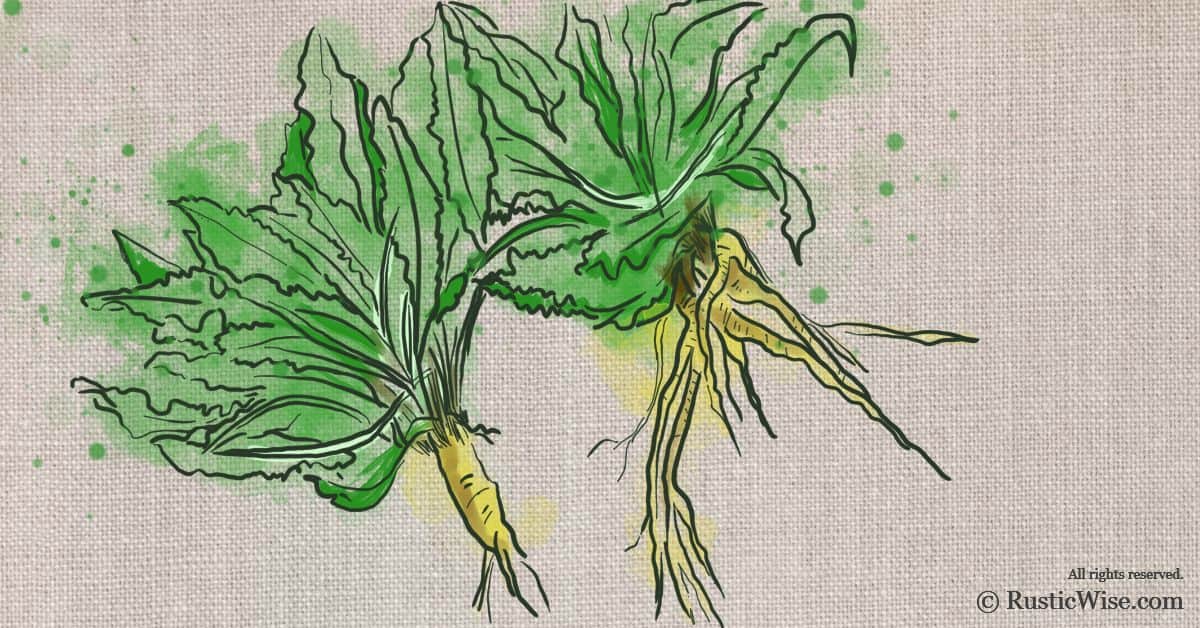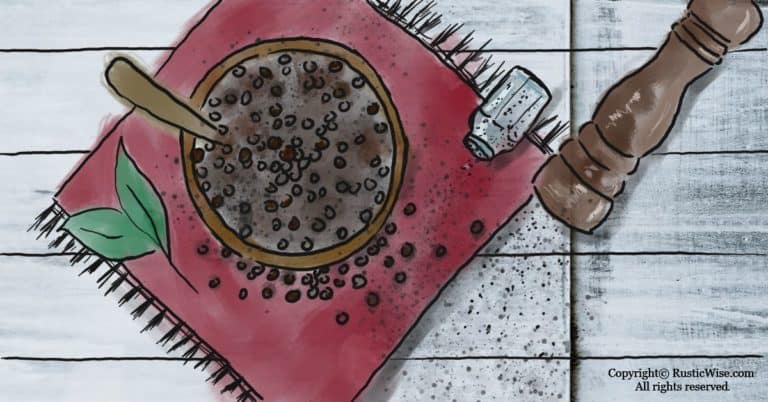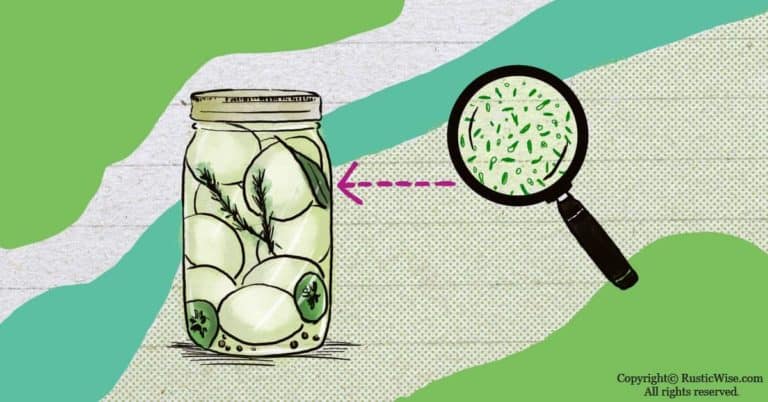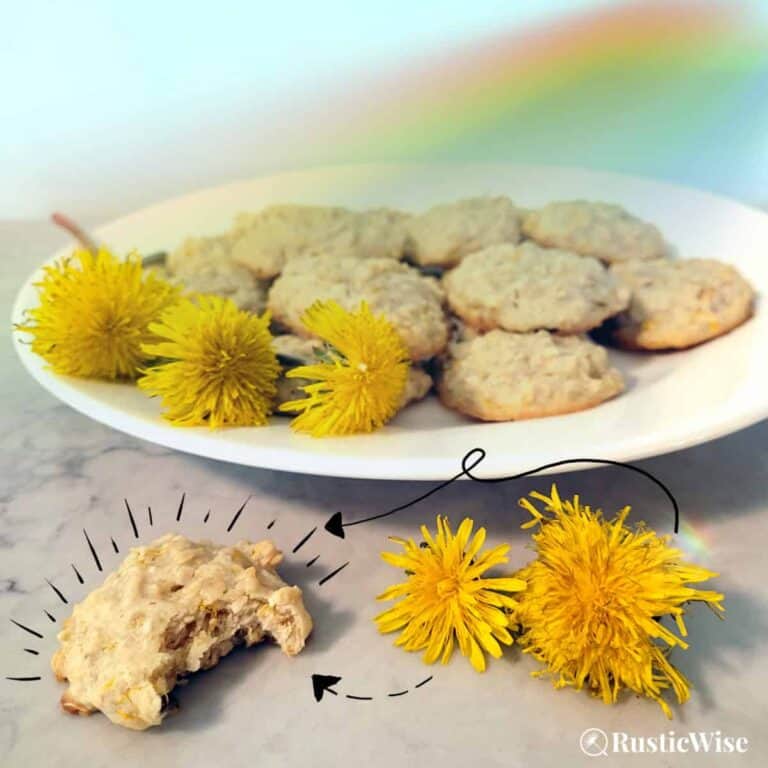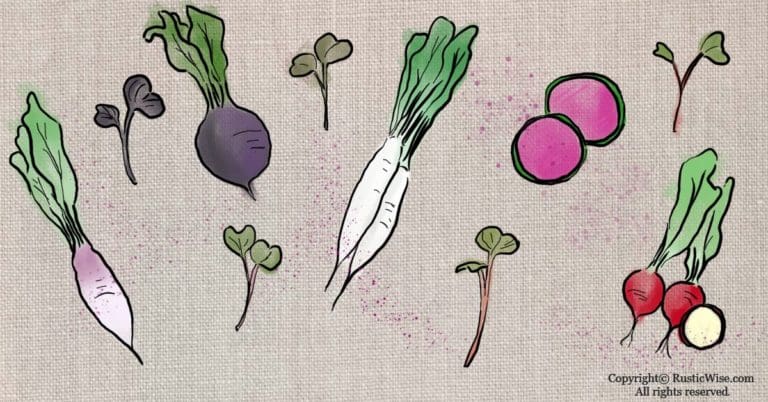What is Yellow Dock Good For? 7 Surprising Health and Medicinal Benefits
You may have heard of yellow dock tea or supplements. But if you look outside, you just might find the source of these products, the yellow dock plant itself growing wild. It’s a common “weed” found in many backyards.
Yellow dock (Rumex crispus) is a perennial plant characterized by its curly or wavy-edged leaves, tall flowering stalks, and its yellow roots. It’s also known as curly dock, curled dock, narrowleaf dock, or sour dock. Originating in Eurasia, you can find it all over North America, and parts of Africa.¹
What is yellow dock good for? While some classify yellow dock as a weed, it’s an edible wild plant that has long been used for its medicinal and health properties. High in iron, vitamins A and C, yellow dock is used as a mild laxative, promotes a healthy digestive system, and is often used to treat anemia.
Let’s take a closer look at a few health and medicinal properties of this wild medicinal herb.
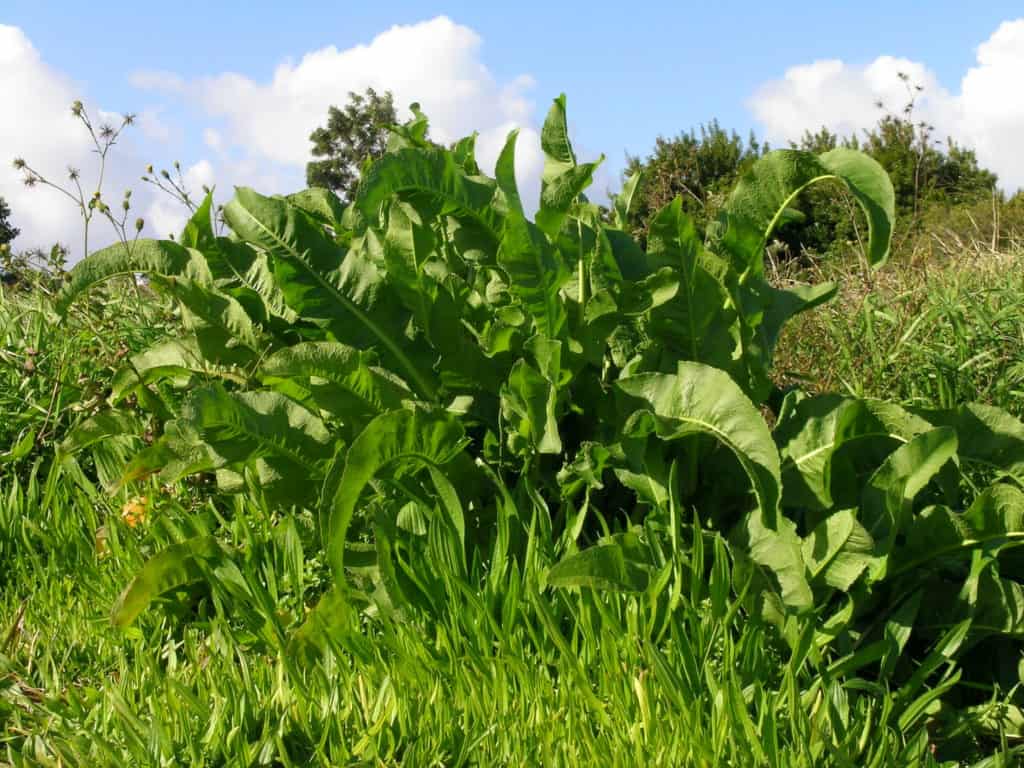
Credit: Harry Rose / Flickr, Rumex crispus leaf3
A closer look at curled dock
Virtually all parts of this medicinal herb are used. The yellow roots give the plant its namesake.
- Leaves and stems: Yellow dock leaves are packed with vitamins, iron, and calcium. Consider adding these healthy greens to your diet!
- Seeds: Rich in dietary fiber, try drying these seeds and sprinkle on top of salads and cereals.
- Roots: The golden roots of this plant are coveted for their healing and medicinal properties. When ingested as tea, it promotes better digestion and functioning of the kidney, liver, intestines, and lymph.
The fleshy taproot of the dock plant runs deep and wide. Some roots penetrate the soil up to 59 inches (150 centimeters) deep.¹
Its deep roots enable this plant to survive year after year in the same spot. It is this coveted yellow root that’s used for many traditional healing purposes.
Yellow dock side effects
While there are many health benefits of yellow dock, some people may experience negative side effects.
So, who should avoid yellow dock?
Avoid yellow dock if you’re pregnant or breastfeeding due to its laxative properties.²
Those with kidney issues, ulcers, gastrointestinal blockages, or blood clotting disorders should also avoid yellow dock.²
The leaves contain high levels of oxalic acid. When eaten in large quantities, it may block the absorption of other nutrients, particularly calcium. Raw leaves contain very high levels of oxalic acid. Cooking or freezing reduces levels of oxalic acid.³
People with arthritis, gout, kidney stones, sensitivity to acidity, or rheumatism should use caution when using this plant as herbal medicine, or introducing it to the diet.³
Note: I am not a doctor, herbalist, or naturopath. Please consult your doctor before using yellow dock supplements. This post is only intended to shine a light on the many uses of yellow dock.
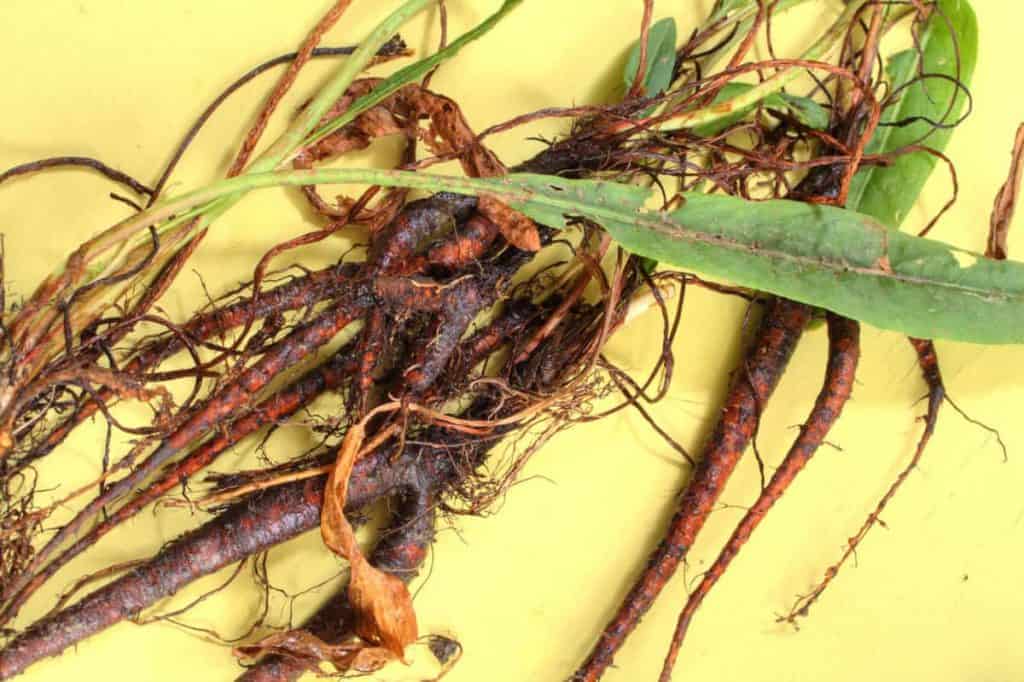
Credit: Yay Images
7 Yellow dock health benefits and medicinal benefits
From leaf to root, this medicinal plant provides many nutritional benefits. It also serves as a natural remedy for many ailments.
The yellow dock plant has long been harvested as a source of healing in many cultures around the world. Different parts of the dock plant are used for different healing and medicinal purposes. It’s known for its high iron content and astringent properties.
Here are 7 surprising yellow dock health benefits.
#1: Nutritional powerhouse
Dock is a rich source of vitamins A and C. Just one cup of raw dock greens provides over 100 percent of your daily requirements.⁴
Yellow dock is also a nutrient-rich source of niacin, thiamine, folate, magnesium, riboflavin, potassium, phosphorous, manganese, and copper.
#2: May help with anemia
The roots of this medicinal herb are full of calcium and iron.
If you suffer from anemia, yellow dock helps maintain healthy iron levels. Powdered dock root is often taken in capsule form as a natural iron supplement to help with anemia.
#3: Natural laxative
If you detest prune juice, you may be comforted to know there’s another natural way to clear blockages.
Dock leaves and seeds are a rich source of dietary fiber, making it a natural laxative.⁴
#4: Promotes healthy digestion
Drink dock root tea for digestive issues and constipation. Roots (fresh or dried) are steeped in water to make yellow dock root tea which can be consumed to help with digestive problems and support functioning of the kidney, liver, intestines, and lymph.
#5: Treats insect bites, rashes, sores, and other skin ailments
Mash up fresh leaves to create a poultice to apply on a variety of skin ailments such as infections, boils, and insect bites.⁴
The dried powdered root is sometimes used as an herbal remedy when mixed with other ingredients to use as healing balms or tinctures.
The Zuni people, a Native American group from modern-day New Mexico, make a poultice from powdered dock root to use on skin infections, sores, and rashes. They create an infusion of the powdered root to help treat athlete’s foot.⁵
#6: Tightens and tones skin
The astringent properties of yellow dock make it a great herb for healing and daily care. Try adding dock root tea in bathwater to help tighten and tone the skin.⁴
#7: Natural mouthwash
A traditional use of dock root tea was as a mouthwash. Swish cooled dock tea around in the mouth and use as a mouthwash to cleanse gums and teeth.⁴
Ways to use yellow dock in the kitchen
As with any wild edible plant, it’s best to eat in moderation. The leaves, stems, root and seeds are all edible.
Safety tip: If you’re hoping to forage yellow dock outdoors, please take the time to learn how to properly identify this plant. Consult with a local specialist if you need help identifying a plant. Eating too much fresh dock leaves can cause an upset stomach, and an increased risk of kidney stones.
Leaves and stems
Dock leaves growing wild can have greatly differing tastes depending on the soil conditions and growing environment.
Dock is a plant that is best harvested when leaves are young and tender because it contains oxalic acid. Young leaves have a slightly mild, sour taste.
Older leaves have greater oxalic acid content, creating a more bitter taste, and in some cases may cause your throat to sting or tingle. Avoid harvesting leaves from flowering dock.
You can eat fresh dock leaves in moderation. Add as part of a salad when mixed with other greens.
The stems are also edible and are juicy with a milder taste than the leaves themselves.
To break down oxalic acids, cook or freeze the leaves.
Dock leaves and stems can also be blended with other greens to make green juices or smoothies. It’s important to note that only a small amount of dock leaves should be used in a juice or smoothie because of its oxalic acid content.
Yellow dock seeds
Dock seeds, once dried, can be used whole and sprinkled on cereals or salads. They are full of dietary fiber.
Or, use finely ground seeds as an addition to recipes such as bread and other types of baking.
Dock seeds harvesting tip
The seeds on a dock plant are easy to gather in the fall, and even the winter. Seeds are ready to be harvested when they are brown. The tall flowered stalks of the yellow dock plant produce an abundance of seeds that fall off easily at the slightest touch.
Enveloping each seed is a paper-thin, triangular casing, or sheath. The sheaths can be ground up along with the seed.

Credit: Harry Rose / Flickr, Rumex crispus fruit2
Yellow dock root
The most common way to use the fresh or dried roots of this medicinal plant is to brew a tea, or a decoction.
In a small saucepan, combine roughly 4 to 6 tablespoons of dried dock roots with 1 liter of water. Simmer on medium-low heat for 20 to 30 minutes. Strain and pour into cups.
Since the taste of this root is very bitter and strong, you may wish to add a touch of your favorite sweetener!
Conclusion: what is yellow dock good for?
Yellow dock (or curly dock) is a wild edible plant that’s harvested for both its nutritional content and medicinal properties. Whether you plan on adding leaves of yellow dock to your salad for a dose of vitamins A and C, grinding the seeds to flour, drinking dock root tea, or taking dock root supplements, use in moderation.
Related questions
What does yellow dock taste like?
If you’re eating yellow dock leaves, the flavors can range depending on if you’re consuming young, tender leaves, or larger, older ones. Young dock leaves and stems have a pleasant, slightly sour, lemony flavor—think rhubarb. Older leaves contain higher levels of oxalic acid and often have a bitter taste.
Yellow dock tea has a strong bitter flavor with roasted earthy notes. Sweeten with honey, or blend with other more palatable herbs. Some people also like to add a slice of lemon.
Is yellow dock good for the liver?
A traditional use of these golden roots (and one that’s still used today) is to promote a healthy liver. Dock roots also promote the functioning of other organs including kidney, intestines, and lymph.
Are dock leaves poisonous to humans?
No, leaves from the Rumex Crispus plant are not poisonous. However, they contain high levels of oxalic acid. Therefore, if you consume large amounts of fresh leaves, you may get an upset stomach. To reduce the levels of oxalic acid, harvest younger leaves (older leaves contain more of this acid), and try cooking or freezing them before eating.
Is dock the same as burdock?
No, dock (Rumex Crispus) is not the same as burdock (Arctium minus or Arctium lappa). While these two “weeds” have similar names, they are not the same. Burdock roots are often much larger and grow to greater depths than yellow dock taproots. Both plants, however, are used to promote liver health.
👉 If you like this post, see our Timeless Guide To Foraging for Wild Food. 🌿
Would you like more timeless tips via email?
Fun tips to help you live an independent, self-sustaining lifestyle. Opt-out at any time.


References
- CAB International, Invasive Species Compendium, Datasheet: Rumex crispus (curled dock): https://www.cabi.org/isc/datasheet/48059. Accessed September 2022.
- WebMD, Vitamins & Supplements, Yellow Dock: https://www.webmd.com/vitamins/ai/ingredientmono-651/yellow-dock. Accessed September 2022.
- Plants For A Future (PFAF), Rumex crispus – L., https://pfaf.org/user/plant.aspx?LatinName=Rumex+crispus. Accessed September 2022.
- Blair, Katrina (2014). The Wild Wisdom of Weeds: 13 Essential Plants for Human Survival. Chelsea Green Publishing. ISBN 978-1-60358-516-3.
- Camazine, Scott and Robert A. Bye 1980 A Study Of The Medical Ethnobotany Of The Zuni Indians of New Mexico. Journal of Ethnopharmacology 2:365-388.

Author: Theresa Tesolin
Theresa is co-founder of RusticWise. She helps people unleash their inner DIY spirit by encouraging them to get dirty and make or grow something from scratch.

